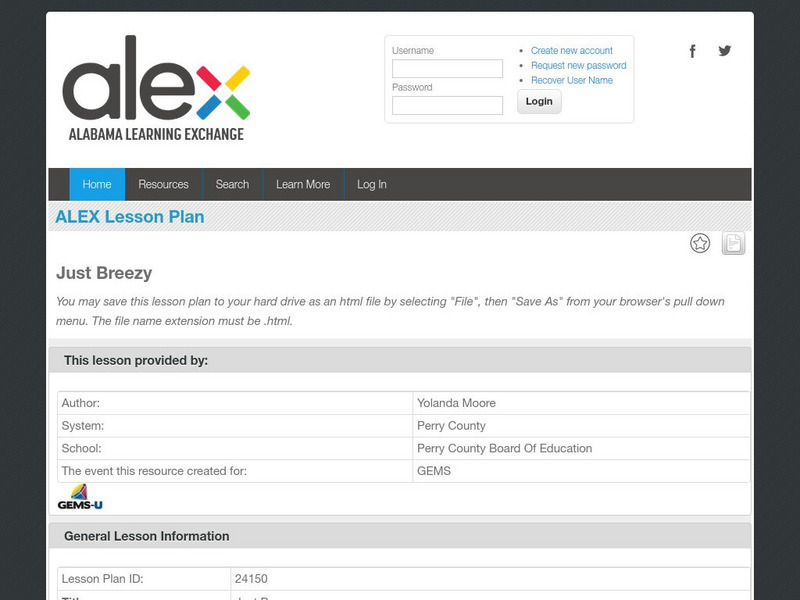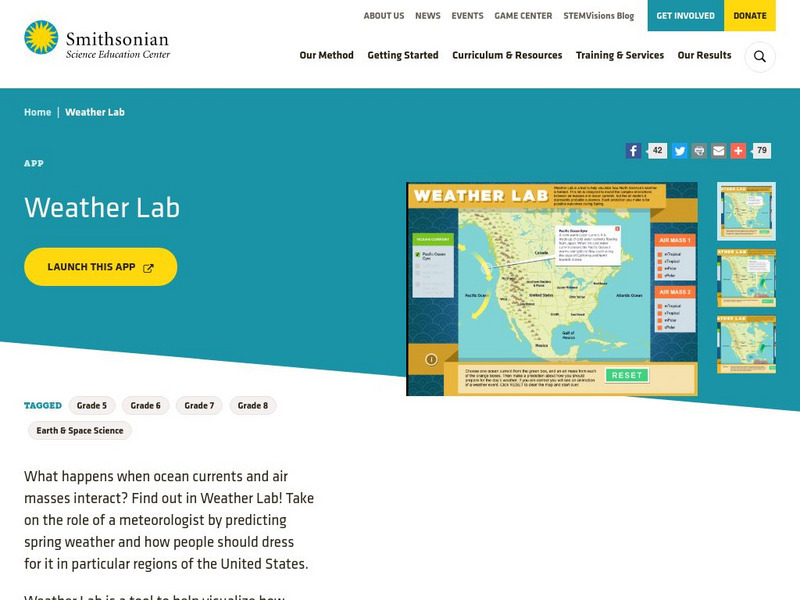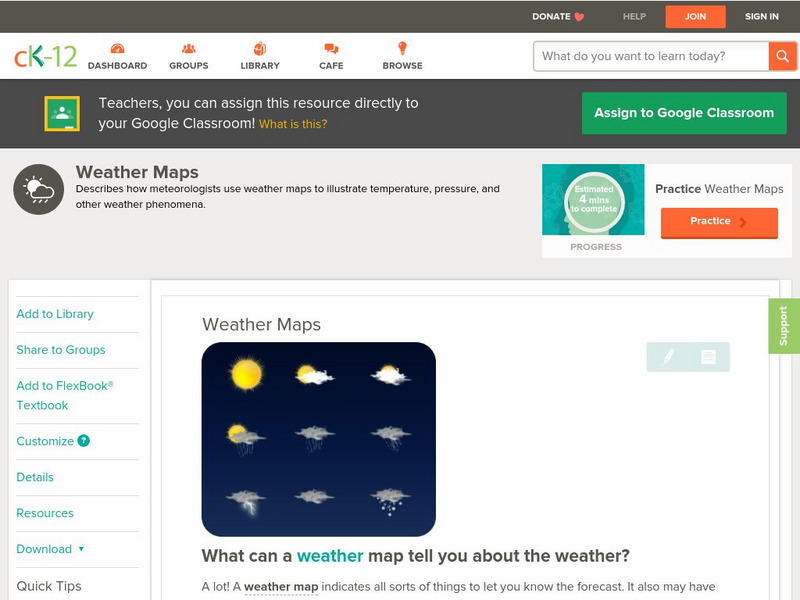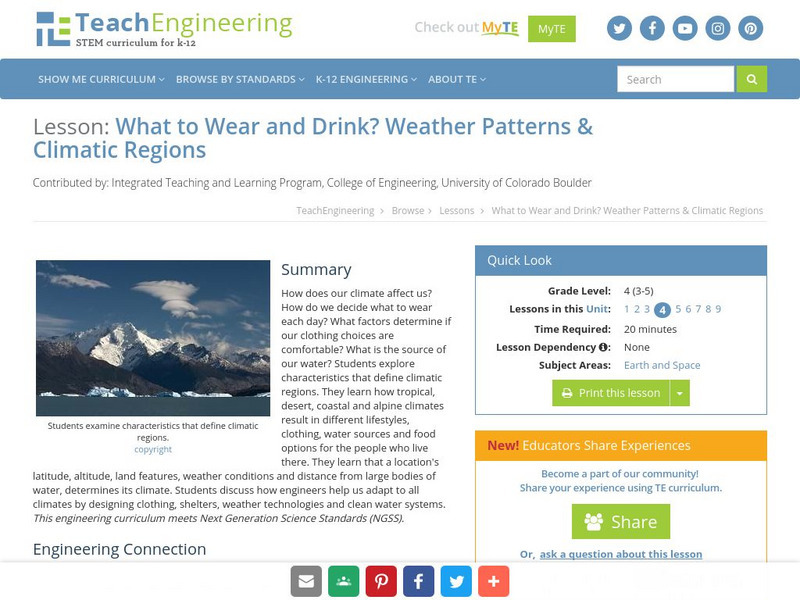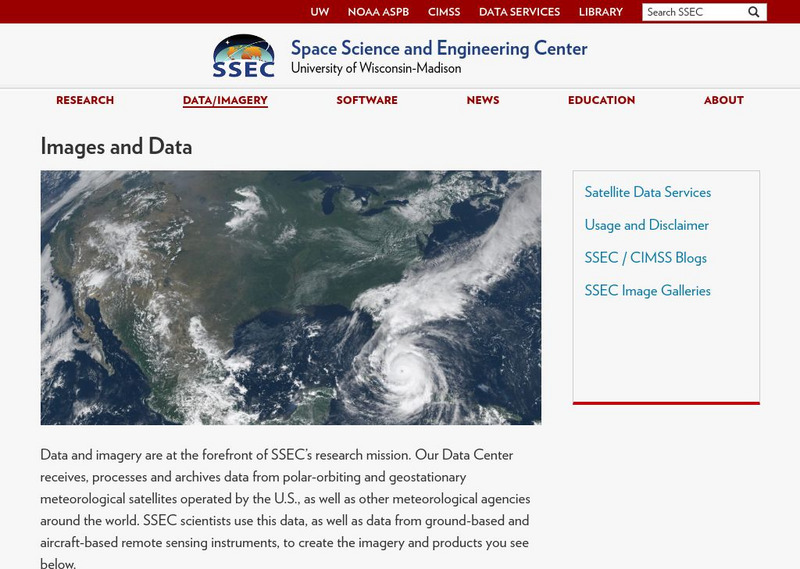Utah Education Network
Uen: Expand Weather Conditions Vocabulary
Second graders will observe and describe weather and use weather related vocabulary in Navajo, Ute, and Spanish.
Utah Education Network
Uen: Calendar & Weather Book
Second graders will record and track weather patterns through the year.
Utah Education Network
Uen: Trb 4:2 Investigation 7 Interpreting Weather Data
After collecting weather data, 4th graders will interpret it.
American Museum of Natural History
American Museum of Natural History: Make Your Own Weather Station
Students can plan and carry out investigations of local weather patterns by building their own weather stations to collect observations of various weather conditions: rainfall, wind direction, and air pressure.
USA Today
Usa Today Weather: Understanding Forecasting
This article provides basic principles to help understand weather forecasting. It also gives links to sites with related topics.
US Geological Survey
U.s. Geological Survey: Floods and Flood Plains
This site provides a detailed report on floods and flood plains. Facts about weather patterns, zoning restrictions, and dams and levees are given along with diagrams and photos.
Alabama Learning Exchange
Alex: Just Breezy
For this lesson, students will learn about sea breezes and land breezes. They will complete demonstrations and work in groups as they investigate how air is affected by the surfaces below it. This lesson plan was created as a result of...
E-learning for Kids
E Learning for Kids: Science: Antarctica Research Center: Describe Different Weather Patterns
This module provides informational text about weather. Students will learn about precipitation and storm fronts. Students will also learn about different types of storms, including the following: hurricanes, cyclones, and typhoons.
Smithsonian Institution
Smithsonian Science Education Center: Weather Lab
Find out how good your weather prediction skills are as you study the movements of air and water, and their interactions. Then predict what the spring holds for residents of different regions of the United States, and what people should...
CK-12 Foundation
Ck 12: Earth Science: Weather Maps
[Free Registration/Login may be required to access all resource tools.] How meteorologists create and read weather maps.
TeachEngineering
Teach Engineering: What to Wear? What to Drink? Weather Patterns and Climatic R
How does our climate affect us? How do we decide what to wear each day? What factors determine if our clothing choices are comfortable? What is the source of our water? Young scholars explore characteristics that define climatic regions....
National Earth Science Teachers Association
Windows to the Universe: Feeling the Heat
For this lesson students learn about the urban heat island effect by investigating which areas of their schoolyard have higher temperatures. Then they analyze data about how the number of heat waves in an urban area has increased over...
The Franklin Institute
Franklin Institute Online: Keep Your Own Weather Journal
This site, which is provided for by the Franklin Institute Online, gives a format for keeping a weather journal.
Utah Education Network
Uen: Gathering Weather Information
Students use weather data and information found on the Internet to predict weather patterns.
Alabama Learning Exchange
Alex: Charting the Weather
During this activity, students will gather data from temperature and water gauges set up on the playground to learn about weather patterns. Then students will build a spreadsheet with data related to temperature, wind direction and...
Alabama Learning Exchange
Alex: Wearing Away the Mountains
The Tennessee River Gorge outside Chattanooga is recognized as a protected biosphere reserve by the United Nations due to its immense proportion of species to acres. Understanding the formation of the gorge helps explain why so many...
Alabama Learning Exchange
Alex: What's the Weather Like?
Students will use the Internet to compare the weather forecast for their city with other cities throughout the United States each week during this unit. Data will be charted for a five-day period then analyzed and discussed.
University Corporation for Atmospheric Research
Ucar: Weather Fronts
When a front passes over an area, it means a change in the weather. Many fronts cause weather events such as rain, thunderstorms, gusty winds and tornadoes.
NASA
Nasa Space Place: What Is La Nina?
A concise explanation of La Nina. Discusses global weather patterns and the difference between El Nino and La Nina.
University of Wisconsin
Ssec: Real Time Imagery and Data: Satellite Images of the Earth
Check out real-time satellite photos of the earth to study weather patterns.
Science Struck
Science Struck: Important Facts About the Stationary Front
Read about how a stationary air front forms when warm and cold air masses meet but neither can overpower the other. Explains what its characteristics are and the impact it can have on weather conditions.
Annenberg Foundation
Annenberg Learner: Wind Chill
Why do windy winter days seem so bitterly cold? Calculate the wind chill factor and find out.





